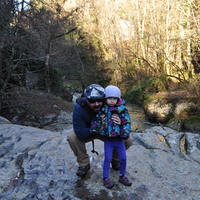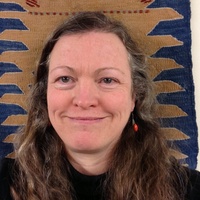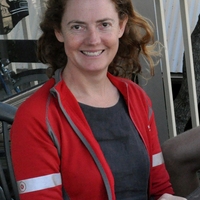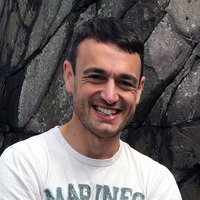
Myles McCallum
Myles McCallum is an associate professor in the Department of Modern Languages and Classics at Saint Mary's University in Halifax, Canada and an associate editor for Mouseion, the journal of the Classical Association of Canada. His current research is split between Roman southern Italy and Pompeii. As the director of the Basentello Valley Research Project, he is concerned with understanding the role played by imperial properties in the cultural development of Apulia and Lucania during the early Roman period, and the nature of imperial landholdings generally in these two Augustan regions. This work has been funded by the Social Sciences and Humanities Research Council of Canada, by whom Myles was awarded a standard research grant in 2010. He has also recently published in the American Journal of Archaeology and the RCRF ACTA on the pottery industry at Pompeii, an interest which stems from his participation as field laboratory supervisor at the Pompeii Research Project: Porta Stabia, directed by Steven Ellis of the University of Cincinnati.
Phone: (902) 420-5815
Address: Dept. of Modern Languages & Classics
Saint Mary's University
923 Robie Street
Halifax, NS
Canada B3H 3C3
Phone: (902) 420-5815
Address: Dept. of Modern Languages & Classics
Saint Mary's University
923 Robie Street
Halifax, NS
Canada B3H 3C3
less
Related Authors
Greg Woolf
University of California, Los Angeles
Nerissa Russell
Cornell University
Simon Malmberg
University of Bergen
Miriam Stark
University of Hawaii at Manoa
Camilla Norman
The University of Sydney
Maurizio Forte
Duke University
Jonathan Prag
University of Oxford
Alex Metcalfe
Lancaster University
Nic Terrenato
University of Michigan
Mathias Mehofer
University of Vienna
InterestsView All (67)










Uploads
Papers by Myles McCallum
landscape evolution is unclear. However, palaeoecological and archaeological records, suggest that both have played an important role, acting in combination to varying degrees through time, to affect landscape dynamics. The country straddling the Puglia and Basilicata border region in southern Italy (the Mezzogiorno) is a landscape particularly sensitive to erosional processes, and provides an ideal area where these relationships can be studied. In addition, the affects of climate change in this area are magnified by poor land use practices that are being applied to an unstable, and easily erodible, surface geology. Moreover recent palaeoecological and archaeological research in this hilly country is also providing vital information regarding the role of climate and people in landscape
dynamics. Four summers of preliminary research with a team consisting of a paleoecologist/geomorphologist, archaeologist, and a dendroclimatologist, has begun reconstruction of a full Holocene climate history from the records of alluvial erosion/deposition, spring discharge, and soil formation. These will aid in determing how climate, and human demography in the Puglia/Basilicata region relate to landscape dynamics. Archaeological surveys have already mapped the varying spatial distribution of cultural materials, providing an assessment of where
people lived, population sizes, and their activities during the Holocene. Numerous dated erosion/deposition sequences in alluvium and valley terrace exposures along the Basentello/Bradano River valley detail the regional record of erosional cycles. Dated spring discharge events are beginning to record groundwater recharge linked either to climate, or to deforestation. In addition, dated soil formation episodes are evidence episodes of ground surface stability. A macrophysical climate model of local past effective precipitation is being used to reconstruct
cycles of past erosion. These understandings are being used to predict future outcomes of global climate change.
archaeological investigation, which includes survey, geophysical prospection, and
excavation, of the Roman villa site at San Felice. Evidence suggests that the site and
the nearby vicus site at Vagnari were part of a rather large imperial estate in the
Basentello River Valley that separated ancient Apulia from Lucania. This preliminary
report presents an interpretation of a variety of datasets that suggest that the site had
an important and prominent residential function until it became an imperial estate,
likely sometime in the early Julio-Claudian period, after which there appears to have
been an increase in productive activities within the structure. The architectural
remains, artefactual assemblage, and environmental evidence collected reveal the
local and regional connections and significance of this villa and the estate to which
it belonged.
landscape evolution is unclear. However, palaeoecological and archaeological records, suggest that both have played an important role, acting in combination to varying degrees through time, to affect landscape dynamics. The country straddling the Puglia and Basilicata border region in southern Italy (the Mezzogiorno) is a landscape particularly sensitive to erosional processes, and provides an ideal area where these relationships can be studied. In addition, the affects of climate change in this area are magnified by poor land use practices that are being applied to an unstable, and easily erodible, surface geology. Moreover recent palaeoecological and archaeological research in this hilly country is also providing vital information regarding the role of climate and people in landscape
dynamics. Four summers of preliminary research with a team consisting of a paleoecologist/geomorphologist, archaeologist, and a dendroclimatologist, has begun reconstruction of a full Holocene climate history from the records of alluvial erosion/deposition, spring discharge, and soil formation. These will aid in determing how climate, and human demography in the Puglia/Basilicata region relate to landscape dynamics. Archaeological surveys have already mapped the varying spatial distribution of cultural materials, providing an assessment of where
people lived, population sizes, and their activities during the Holocene. Numerous dated erosion/deposition sequences in alluvium and valley terrace exposures along the Basentello/Bradano River valley detail the regional record of erosional cycles. Dated spring discharge events are beginning to record groundwater recharge linked either to climate, or to deforestation. In addition, dated soil formation episodes are evidence episodes of ground surface stability. A macrophysical climate model of local past effective precipitation is being used to reconstruct
cycles of past erosion. These understandings are being used to predict future outcomes of global climate change.
archaeological investigation, which includes survey, geophysical prospection, and
excavation, of the Roman villa site at San Felice. Evidence suggests that the site and
the nearby vicus site at Vagnari were part of a rather large imperial estate in the
Basentello River Valley that separated ancient Apulia from Lucania. This preliminary
report presents an interpretation of a variety of datasets that suggest that the site had
an important and prominent residential function until it became an imperial estate,
likely sometime in the early Julio-Claudian period, after which there appears to have
been an increase in productive activities within the structure. The architectural
remains, artefactual assemblage, and environmental evidence collected reveal the
local and regional connections and significance of this villa and the estate to which
it belonged.